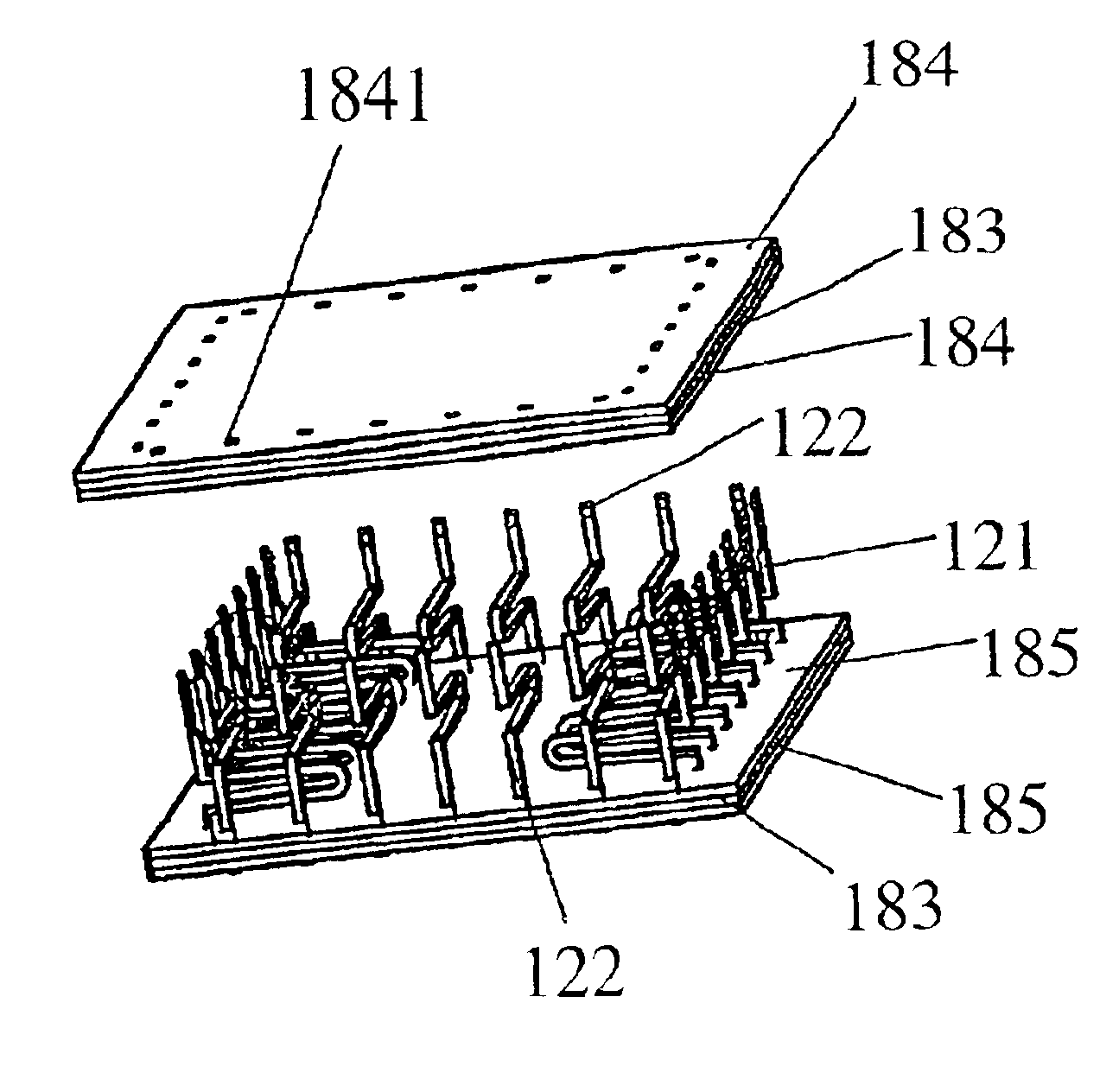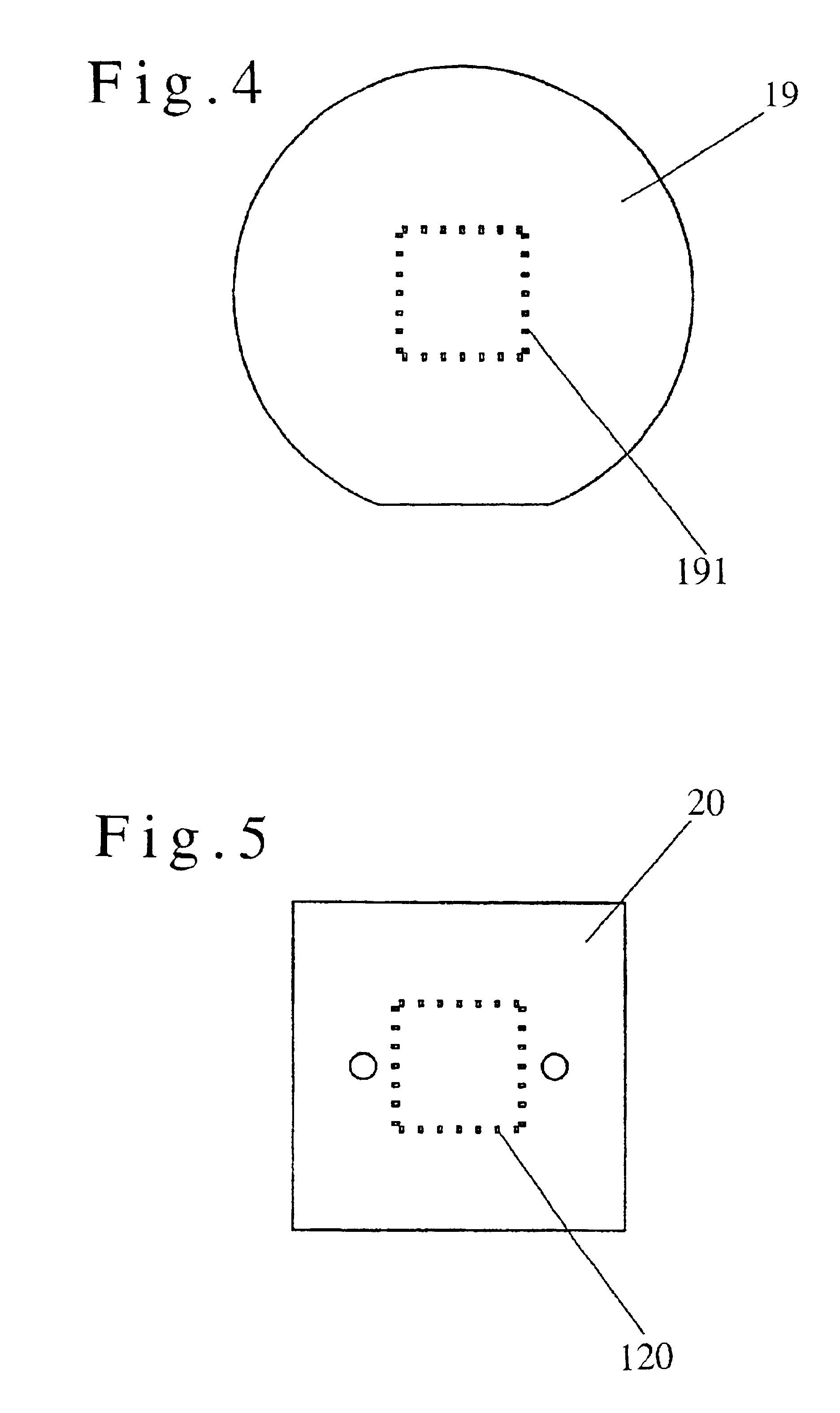Probe pin assembly
a technology of probe pins and assemblies, applied in the direction of individual semiconductor device testing, semiconductor/solid-state device testing/measurement, instruments, etc., can solve the problems of difficult to provide a probe pin with an appropriate spring constant, the required pin pitch of the probe pin used in ic testing has become very small, and the circuit pattern has become extremely fine. to prevent contact error
- Summary
- Abstract
- Description
- Claims
- Application Information
AI Technical Summary
Benefits of technology
Problems solved by technology
Method used
Image
Examples
embodiment 1
(Embodiment 1)
FIGS. 4-21 illustrate a first embodiment of the present invention. FIG. 4 shows an array of electrode pads on a wafer, while FIG. 5 shows an array of electrode pads on a circuit. Referring now to FIG. 4, electrode pads 191 are arrayed on a wafer 19 in one rectangular line. There are some regions in the four corners where electrode pads are absent. As shown in FIG. 5, electrode pads 120 are arrayed on a rectangular line on a circuit board 20. The electrode pads 191 for a single chip on the wafer 19 are located so that they face those of the electrode pads 120 on the circuit board 20 when they are opposed to each other. The first embodiment will describe a probe pin assembly that is suitable for use in establishing electric connection or electric continuity between such opposing electrode pads. Referring now to FIG. 6, the probe pin assembly has a lateral array of parallel probe pins 121 having a plurality of first perpendicular-type probe pins 112 and a vertical array o...
embodiment 2
(Embodiment 2)
FIGS. 22-27 illustrate a second embodiment of the present invention. The second embodiment is the case in which electrode pads are arranged in a staggered pattern.
In FIG. 22, each of the first and second perpendicular-type probe pins 112, 212 is composed of a pair of an outer probe pin 22 and an inner probe pin 21, opposed to the electrode pad 191. Namely, the input unit 13 and the beam extending from the output unit 14 to the deformation unit 15 of the perpendicular-type probe pin 112 (212) opposing the outer electrode pad 191 in the staggered pattern is directed to the outer electrode pad 191 arranged on a rectangular line, while the input unit 13 and the beam extending from the output unit 14 to the deformation unit 15 of the perpendicular-type probe pin 112 (212) opposing the inner electrode pad 191 in the staggered pattern is directed to the inner electrode pad 191 arranged on a rectangular line. As shown in FIG. 23, the principle structures of the input unit 13, ...
PUM
 Login to View More
Login to View More Abstract
Description
Claims
Application Information
 Login to View More
Login to View More - R&D
- Intellectual Property
- Life Sciences
- Materials
- Tech Scout
- Unparalleled Data Quality
- Higher Quality Content
- 60% Fewer Hallucinations
Browse by: Latest US Patents, China's latest patents, Technical Efficacy Thesaurus, Application Domain, Technology Topic, Popular Technical Reports.
© 2025 PatSnap. All rights reserved.Legal|Privacy policy|Modern Slavery Act Transparency Statement|Sitemap|About US| Contact US: help@patsnap.com



